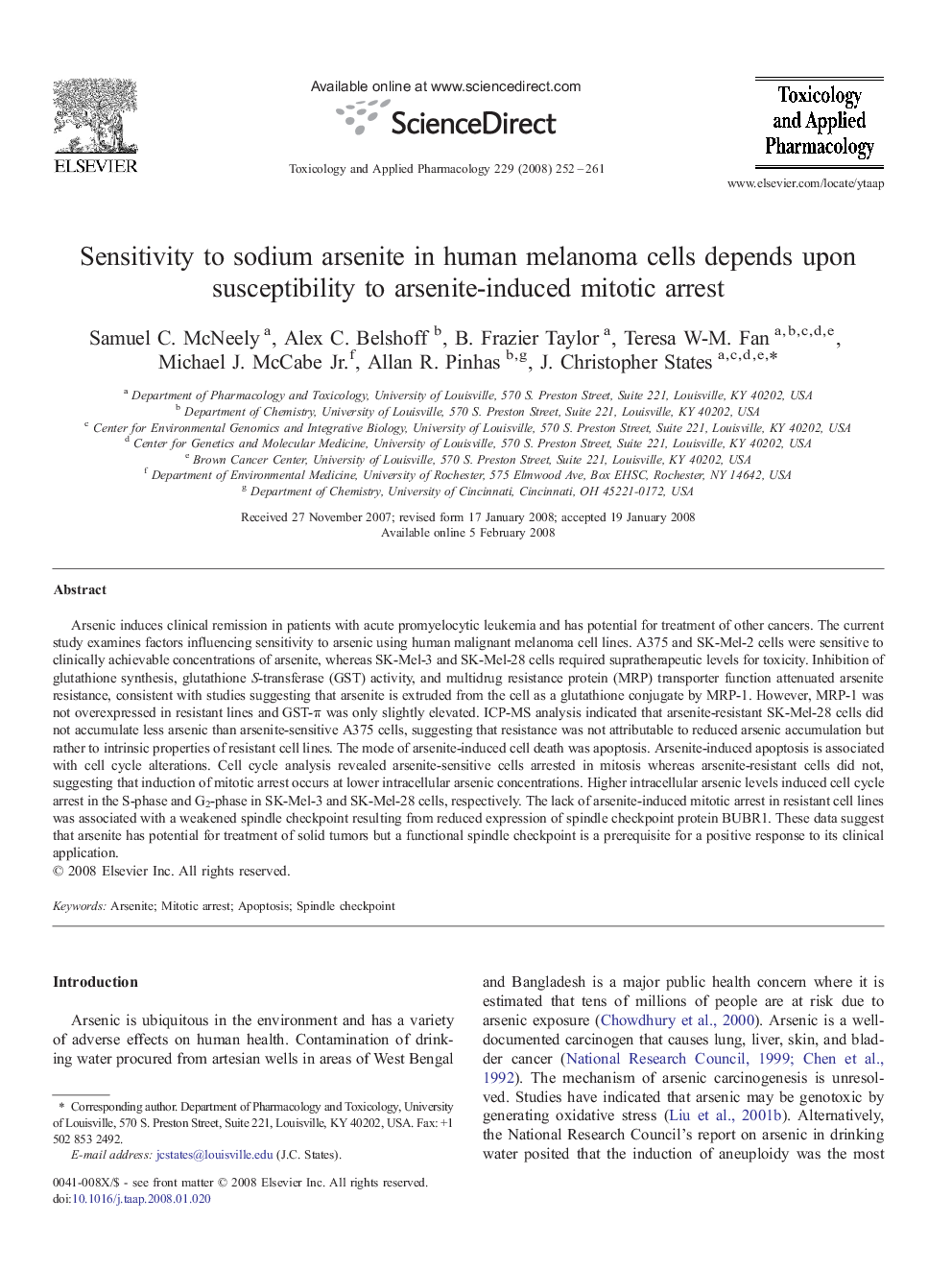| کد مقاله | کد نشریه | سال انتشار | مقاله انگلیسی | نسخه تمام متن |
|---|---|---|---|---|
| 2571225 | 1128622 | 2008 | 10 صفحه PDF | دانلود رایگان |

Arsenic induces clinical remission in patients with acute promyelocytic leukemia and has potential for treatment of other cancers. The current study examines factors influencing sensitivity to arsenic using human malignant melanoma cell lines. A375 and SK-Mel-2 cells were sensitive to clinically achievable concentrations of arsenite, whereas SK-Mel-3 and SK-Mel-28 cells required supratherapeutic levels for toxicity. Inhibition of glutathione synthesis, glutathione S-transferase (GST) activity, and multidrug resistance protein (MRP) transporter function attenuated arsenite resistance, consistent with studies suggesting that arsenite is extruded from the cell as a glutathione conjugate by MRP-1. However, MRP-1 was not overexpressed in resistant lines and GST-π was only slightly elevated. ICP-MS analysis indicated that arsenite-resistant SK-Mel-28 cells did not accumulate less arsenic than arsenite-sensitive A375 cells, suggesting that resistance was not attributable to reduced arsenic accumulation but rather to intrinsic properties of resistant cell lines. The mode of arsenite-induced cell death was apoptosis. Arsenite-induced apoptosis is associated with cell cycle alterations. Cell cycle analysis revealed arsenite-sensitive cells arrested in mitosis whereas arsenite-resistant cells did not, suggesting that induction of mitotic arrest occurs at lower intracellular arsenic concentrations. Higher intracellular arsenic levels induced cell cycle arrest in the S-phase and G2-phase in SK-Mel-3 and SK-Mel-28 cells, respectively. The lack of arsenite-induced mitotic arrest in resistant cell lines was associated with a weakened spindle checkpoint resulting from reduced expression of spindle checkpoint protein BUBR1. These data suggest that arsenite has potential for treatment of solid tumors but a functional spindle checkpoint is a prerequisite for a positive response to its clinical application.
Journal: Toxicology and Applied Pharmacology - Volume 229, Issue 2, 1 June 2008, Pages 252–261